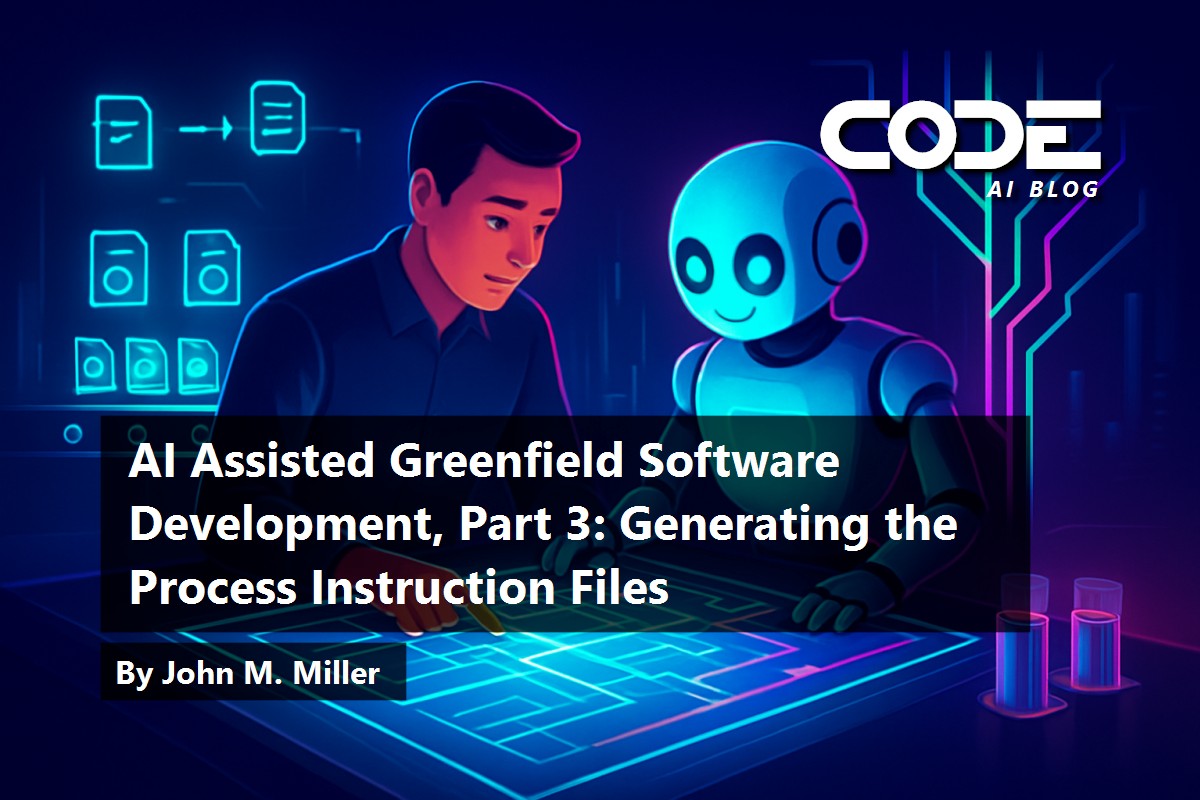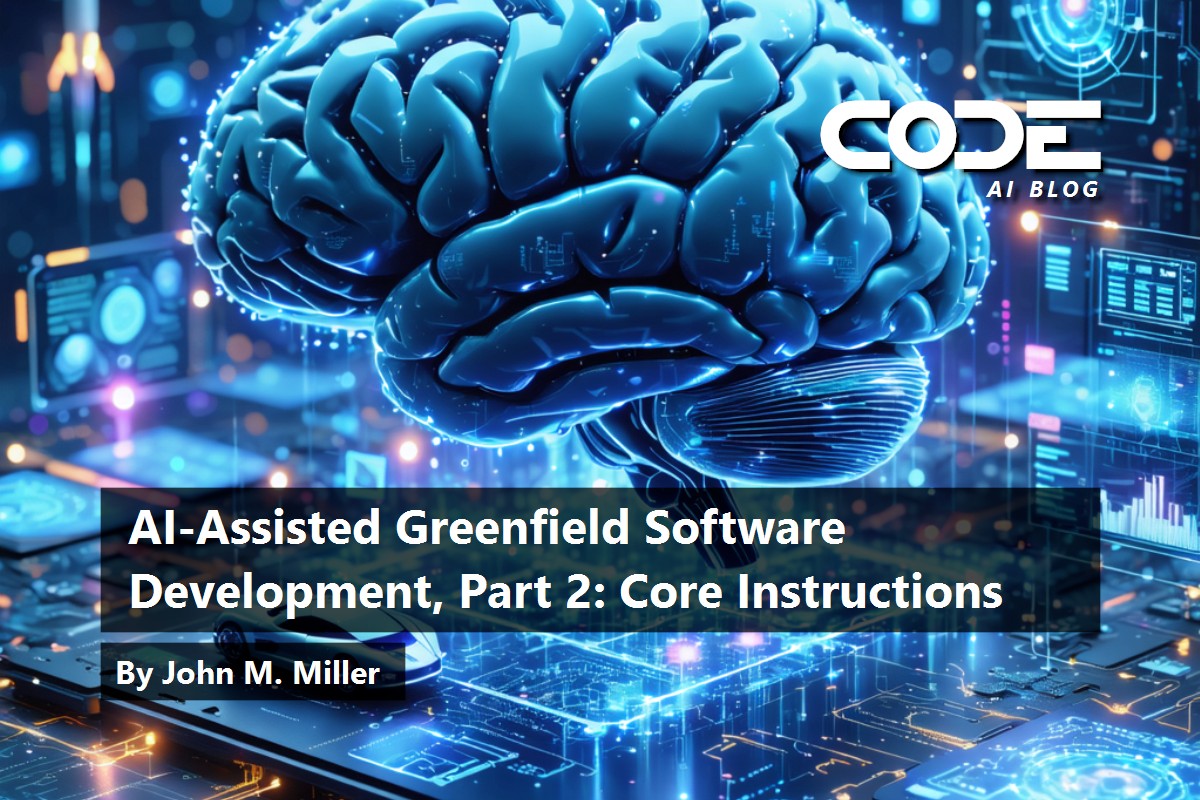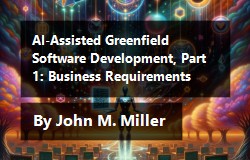AI Assisted Greenfield Software Development, Part 3: Generating the Process Instruction Files
by | December 30, 2025
In the third post of his series, John Miller explains how he creates instruction files that guide AI code generation. The key is being specific with prompts and tracking code sources to avoid messy output. John covers three instruction files: one for AI code quality standards, one mapping the human-AI workflow with review stages, and one defining a Git workflow for fast updates. He uses prompts to automatically generate and maintain these instructions, making the system flexible. The goal is making AI a reliable team member that speeds up development without breaking things or creating compliance issues.

















